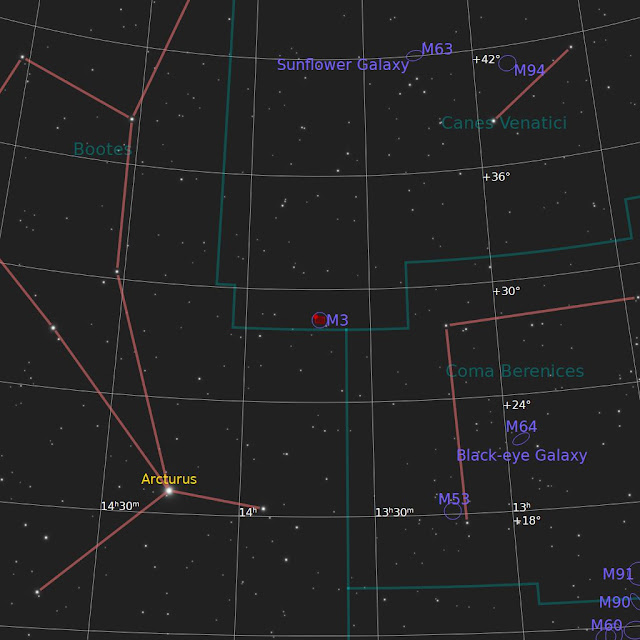Second night out with the club's new camera ...
We hosted a local girl scout troop at our club's observatory on Saturday 5/18. The troop worked on their Space Science badge in between the clouds. We were able to cover every aspect of the badge, including visual observing, astrophotography, and spectra. Unsurprisingly, the skies completely cleared at the end of the program. We got to show the girl scouts M51 on the club's Celestron 14" Edge HD with our new OGMA AP26CC camera. We live stacked the galaxy in SharpCap for about 10 minutes.
After the troop left, the observatory director and I stayed and imaged M51 for about an hour or so. We had only cooled the camera to 0 degrees Celsius as the observatory was very warm that day and we had not planned on imaging. This gave us some issues when processing the image. We were worried that there was an issue with the camera. The M3 image from a few days earlier was taken at -10 degrees Celsius and did not exhibit any issues. An image taken after M51 was also taken with the camera cooled to -10 degrees Celsius, again no issues. We managed to gather 13 subs at 3 minutes each for a total of 39 minutes of exposure. Here's the result.
 |
| M51 from the BMO |
Processing:
All pre and post processing was performed in PixInsight. Pre-Processing: All subs were visually inspected with Blink and subs with issues were removed. All light Frames, Flats, Darks and Dark flats were loaded into WBPP. Linear Post Processing: Background extraction was performed with GraXpert followed by BXT (correct only). SPCC was used for Color Calibration followed by a full application of BXT. Noise was reduced with NXT. The image was made non-linear with HT. Non-linear Post Processing: Stars were removed with StarXT. Stars: Saturation was increased with CT. Starless: Saturation was increased with CT. LHE was applied at 3 Kernel sizes. Unsharp mask was applied and MMT was used to increase sharpness. The Stars and Starless images were combined with Pixel Math to produce the final image.
What is it?
Messier 51 (M51) is also known as the Whirlpool Galaxy. It is actually a pair of galaxies gravitationally interacting, M51 and the smaller NGC 5195. Recent simulations suggest that NGC 5195 actually passed through M51 500 to 600 million years ago, causing M51's distinctive spiral structure.
 |
| Annotated image of M51 |
How Big is it?
This object has an size of 13.7 x 11.7 arcminutes (1 degree is 60 arcminutes) on the night sky. It is 111.6 thousand light-years (ly) in diameter.
How Far is it?
It is located about 28 million light-years (ly) from Earth in the constellation Canes Venatici.
How to find it?
This object is visible in small telescopes and binoculars, and like M3, is best viewed in a large Dobsonian like our club's 20" obsession. Even though M51 is in Canes Venatici, it is found using the Big Dipper asterism in Ursa Major. M51 can be found just of the end of the Big Dipper's handle as indicated in the finder chart below.
 |
| Finder chart for M51 |
Image Details:


























